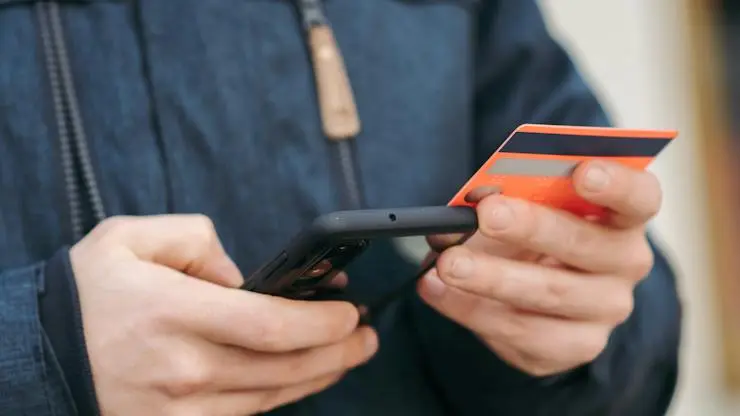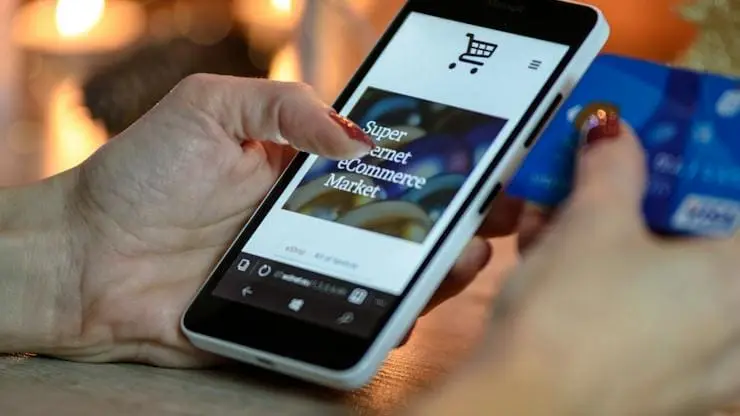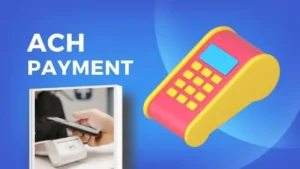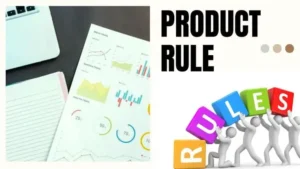Mobile payment results, the epitome of fiscal invention, encompass technologies easing deals through mobile bias. A revolutionary volition to conventional payment styles, these results empower druggies to make purchases, transfer finances, and settle bills painlessly via their smartphones.
The Global Surge
A global crescendo echoes in the adoption of mobile payment solutions. The amalgamation of user-friendly interfaces and technological strides propels their popularity, captivating consumers and enterprises worldwide.
The Mosaic of Advantages: Benefits of Mobile Payment Solutions
Convenience Redefined
At the forefront of mobile payment advantages lies unparalleled convenience. Users transcend temporal and spatial constraints, executing transactions anytime, anywhere, liberating them from the shackles of physical currency or cards.
The Fortification of Security
Advanced security features fortify mobile payment apps. Encryption and biometric authentication stand as guardians, ensuring a fortress of security around users’ financial information.
Velocity of Transactions
Mobile payment solutions orchestrate transactions at the speed of thought. Long queues and sluggish processing times dissipate, replaced by the simplicity of a tap or scan, swiftly concluding the payment process.
Popular Mobile Payment Solutions

let’s take a look at some of the famous mobile payment solutions, both free and paid, along with their respective pros and cons:
Free Mobile Payment Solutions:
Google Pay:
Pros:
Seamless integration with Android devices.
Supports in-app purchases and online transactions.
Secure with Google’s advanced security features.
Cons:
Limited availability on iOS devices.
Some features may vary by region.
Apple Pay:
Pros:
Native integration with iOS devices.
Secure with features like Face ID and Touch ID.
Wide acceptance at many retail locations.
Cons:
Limited to Apple devices.
May not be as widely supported as other options in some regions.
Samsung Pay:
Pros:
Works with an extensive variety of cell phones, including non-Samsung gadgets.
Upholds both NFC and MST (Attractive Secure Transmission) for more extensive acknowledgment.
Loyalty program integration.
Cons:
Availability may vary by region.
Limited support for some banks and cards.
Venmo:
Pros:
Popular for peer-to-peer transactions.
Social features for sharing payment activities.
Cons:
Limited business use.
Transaction fees for credit card payments.
Paid Mobile Payment Solutions:
Square:
Pros:
Versatile for both in-person and online transactions.
Suitable for small businesses.
Square Reader allows card payments without additional hardware costs.
Cons:
Transaction fees can add up.
May not be as cost-effective for larger businesses.
Stripe:
Pros:
Robust API for custom integrations.
Supports a wide range of payment methods.
Advanced analytics and reporting.
Cons:
Transaction fees apply.
May require technical expertise for setup and customization.
PayPal:
Pros:
Widely accepted globally.
Suitable for both personal and business use.
Buyer and seller protection.
Cons:
Transaction fees for business transactions.
Disputes and account holds can occur.
Authorize.Net:
Pros:
Established and reliable payment gateway.
Supports various payment methods.
Cons:
Requires a merchant account.
monthly fees in addition to transaction fees
It’s fundamental to observe that the suitability of a particular flexible portion game plan depends upon various components, including the kind of business, principal vested party, and geographic region. Moreover, charges and elements might change after some time, so checking the most recent data from the individual providers is fitting.
How Mobile Payment Solutions Work
Adaptable portion game plans enable clients to make trades using their PDAs, for instance, cells or tablets, without the necessity for real cash or traditional portion procedures like Mastercards. To make it more straightforward and more secure to direct business, these arrangements utilize different advancements. This is an outline of the way versatile installment arrangements commonly work:
Setup of a Mobile Wallet:
The first step is to download and install a mobile wallet or app for making payments on a smartphone. Apple Pay, Google Pay, Samsung Pay, and different banking applications are well known models.
Authentication and registration:
Clients need to enroll and interface their portable wallet to their financial balance, credit/charge card, or other money sources. They may be required to set up additional security measures like PIN codes, biometric authentication (fingerprint, face recognition), or two-factor authentication during this procedure.
Supported Software:
The following technologies are utilized by mobile payment solutions to facilitate transactions:
NFC: Near Field Communication This innovation considers contactless correspondence between the cell phone and the installment terminal when they are in nearness.
QR Codes: A few arrangements produce QR codes that the shipper sweeps to start the exchange.
Bluetooth: For secure communication between the mobile device and the point-of-sale terminal, some systems use Bluetooth technology.
Exchange Inception:
While making a buy, clients pick the portable installment choice on their gadget.
The payment information is represented by a one-of-a-kind token or code that is generated by the mobile wallet.
Secure Transmission:
The installment data is safely sent from the cell phone to the retail location (POS) terminal utilizing the chose innovation (NFC, QR code, Bluetooth).
Tokenization:
Tokenization is used by many mobile payment systems to improve security. Each transaction generates a unique token rather than transmitting actual payment card information. These tokens are useless to potential attackers even if they are intercepted.
Authorization:
The details of the transaction are sent to the payment processor for authorization by the merchant’s POS terminal or payment gateway.
The installment processor checks the client’s character and the accessibility of assets.
Installment Affirmation:
The user receives a confirmation on their mobile device following successful authorization, and the transaction is concluded.
A confirmation may also be displayed on the POS terminal for merchants.
Exchange Records:
Transaction details can be viewed by both the user and the merchant in their respective records, typically within the mobile wallet app or on bank statements.
Security precautions:
To defend client information and monetary data, portable installment arrangements integrate an assortment of safety efforts, like encryption, tokenization, biometric verification, and gadget level security.
The Melody of Change: Mobile Payment Trends
Contactless Installments and NFC Innovation:
The reception of contactless installments utilizing Close to Handle Correspondence (NFC) innovation has been on the ascent. In light of the COVID-19 pandemic, this trend is driven by the convenience and hygiene benefits.
Authentication via biometrics:
Mobile payment solutions are increasingly incorporating biometric authentication methods like fingerprint scanning and facial recognition e.g. If You are sending a payment to anyone, You have to verify Yourself by biometric fingerprint on Your Phone or by 3D Facial Scan on Your IPhone. This improves security and gives a consistent client experience.
Expansion of the Digital Wallet:
The expansion of advanced wallets, including those given by tech goliaths (Apple Pay, Google Pay, Samsung Pay) and monetary organizations, keeps on developing. A centralized platform for various payment methods and loyalty programs is provided by these wallets.
QR Code Installments:
In areas with high mobile penetration, QR code payments have gained popularity. This strategy is helpful for the two buyers and traders, as it requires just a cell phone and wipes out the requirement for actual cards.
Integration of cryptocurrencies:
Support for cryptocurrencies is being considered or has already been implemented by some mobile payment solutions. This demonstrates the growing interest in blockchain technology and digital assets.
Shared (P2P) Installments:
P2P payment apps like Your Online Banking App, or Paypal, etc, which enable users to send money directly to one another, are gaining popularity. These applications frequently give highlights like dividing bills and mentioning installments.
In-Application Installments:
In-application installments, where clients can make buys inside versatile applications, have become progressively pervasive. E-commerce, gaming, and a variety of service-oriented apps are leading examples of this trend.
Technology for Wearables:
Mobile payments are now possible through a growing number of wearable devices, such as smartwatches. Clients can make exchanges utilizing their wearable contraptions, frequently associated with their cell phones.
AI and machine learning integration:
Versatile installment arrangements are consolidating man-made reasoning (computer based intelligence) and AI (ML) for misrepresentation location, risk the executives, and personalization. These advances improve security and give custom-made client encounters.
IoT and Associated Gadgets:
By allowing connected devices to facilitate transactions, the Internet of Things (IoT) is influencing mobile payments. For instance, brilliant vehicles, candy machines, and other IoT gadgets can become points of installment.
Administrative Turns of events:
In an effort to accommodate and regulate mobile payment services, regulatory frameworks around the world are undergoing change. The development and operation of mobile payment solutions are being influenced by compliance with these regulations.
Initiatives for Financial Inclusion:
Using portable installment arrangements, which empower people without admittance to customary financial administrations to take part in the advanced economy, monetary consideration is turning out to be progressively advanced.
The Duality of Progress: Challenges and Concerns
While mobile payment options have a lot to offer, widespread adoption of them comes with a few drawbacks and concerns. Here are a portion of the vital difficulties and concerns:
Problems with safety:
Cybersecurity and thievery: Unauthorized access, data breaches, and phishing attacks are all possibilities for fraud to occur with mobile payments. Network protection measures should persistently advance to counter these dangers.
User Privacy:
Privacy and data collection concerns: Versatile installment arrangements frequently gather a lot of client information. How this data is stored, used, and shared raises concerns. Keeping up with client protection is urgent to fabricate and keep up with trust.
Standardization is lacking:
Services that are fragmented: The market is loaded up with different versatile installment arrangements, each with its own arrangement of principles and conventions. The absence of normalization can prompt interoperability issues and a divided client experience.
Problems with the infrastructure:
Veracity of the Network: A reliable and secure network infrastructure is necessary for mobile payments. Users may have trouble completing transactions in places where the connectivity to the network is inconsistent or unreliable.
Technology Obstacles:
Gadget Similarity: More established or less high level cell phones may not help the most recent versatile installment advances, restricting access for specific clients. It is difficult to guarantee compatibility across a wide range of devices.
Administrative Consistence:
Changing Administrative Scene: The regulatory framework for mobile payments is always changing. Complying with assorted and advancing guidelines across various areas can be mind boggling for the two suppliers and clients.
Merchant Adoption Is Limited:
Merchant Opposition: Concerns about transaction fees, costs associated with technology integration, or a lack of familiarity with the technology may prevent some businesses from implementing mobile payment solutions.
Education and awareness of the customer:
Absence of Understanding: Numerous buyers may not completely comprehend how versatile installment arrangements work or might know nothing about the safety efforts set up. Instructing clients about the advantages and dangers is fundamental for boundless reception.
Reliance on Cell phones:
Using a Device: Users must have a working and fully charged mobile device in order to use mobile payments. Transactions may be hampered if a device is stolen, damaged, or out of battery.
Potential for Technical Flaws:
System outages: Specialized issues, framework free times, or errors in versatile installment stages can disturb exchanges and dissolve client certainty.
Change Resistance:
Habits of behavior: Particularly if they are accustomed to conventional payment methods, users may be resistant to adopting new payment methods. Defeating latency and encouraging an adjustment of shopper conduct can challenge.
Currency and Problems Across Borders:
Differences in currencies: Having to deal with multiple currencies in international transactions can make things more difficult. Trade rates, charges, and cross-line guidelines might affect the client experience and cost.
Stakeholders in the industry need to work together to solve these problems, including users, financial institutions, regulators, and mobile payment providers. As the portable installment scene keeps on developing, endeavors to upgrade security, protection, and ease of use will assume a urgent part in defeating these worries.
Harmonizing with Tomorrow: Future of Mobile Payment Solutions
Emerging Technologies Overture
The future unveils exciting possibilities with the overture of technologies like blockchain and artificial intelligence into mobile payment solutions.
Market Predictions Symphony
Analysts compose a symphony of continued growth for mobile payments, with an expanding chorus of users and transactions.
Integration with IoT Cadence
The Internet of Things (IoT) contributes to the cadence, influencing the evolution of mobile payments and creating a more interconnected financial ecosystem.
Echoes of Change: Impact on Businesses
Sales Crescendo
Businesses embracing mobile payment solutions often experience a crescendo in sales, attracting a harmonious stream of customers with a seamless transactional rhythm.
Customer Experience Harmonics
Mobile payments contribute to a harmonious customer experience, fostering loyalty and satisfaction in a melodic arrangement.
Economic Savings Symphony
The shift to mobile payments orchestrates a symphony of economic savings for businesses, streamlining financial processes and diminishing reliance on traditional banking methods.
Choosing the Melody: How to Choose the Right Mobile Payment Solution
Compatibility Sonata
Harmony in choosing the right mobile payment solution involves considering compatibility with various devices and operating systems.
Security Features Serenade
Prioritizing solutions with a serenade of robust security features safeguards users and businesses from potential threats.
Transaction Fees Crescendo
Evaluating the transaction fees associated with different mobile payment options orchestrates a cost-effective crescendo, guiding users towards the right solution.
Narratives in Harmony: Case Studies
Success Stories Overture
Explore overtures of success as businesses flourish following the adoption of mobile payment solutions.
Lessons Learned Cadence
Examine the cadence of lessons learned by businesses during the implementation of mobile payment systems.
User Experiences Rhapsody
Listen to the rhapsody of user experiences, as they share their melodic tales with various mobile payment apps and how it has orchestrated changes in their daily lives.
The Symphony of Caution: Tips for Using Mobile Payment Solutions
Security Measures Interlude
Inserting an interlude of security measures ensures the safety of users’ financial information while dancing with mobile payment solutions.
Transaction Management Harmony
Maintaining financial discipline involves orchestrating a harmony in tracking transactions and setting spending limits.
Melodic App Updates
Regularly updating mobile payment apps introduces a melodic progression, benefiting users with the latest security patches and features.
Global Crescendo: Mobile Payment and the Global Economy
Harmony in Financial Inclusion
Mobile payments harmonize with financial inclusion, composing a melody that provides access to financial services for unbanked populations.
Global Transactions Symphony
The ease of transactions across borders contributes to a symphony, fostering a more connected global economy.
Economic Impact Overture
Explore the overture of economic impact as mobile payments resonate within individual economies and the world at large.
Regulatory Harmonics: The Role of Regulation
Regulatory Frameworks Sonata
Explore the sonata of regulatory frameworks governing mobile payments and their symphonic impact on the industry.
Compliance Challenges Rhapsody
Businesses navigate a rhapsody of compliance challenges amidst diverse regulations surrounding mobile payments.
Government Initiatives Crescendo
Understand the crescendo of government initiatives, shaping the symphonic landscape of mobile payments.
Educating the Audience: Harmonies in Consumer Education
Awareness Campaigns Symphony
Explore the symphony of awareness campaigns, harmonizing to educate consumers about the benefits and safe usage of mobile payments.
Consumer Education Programs Overture
Highlight the overture of consumer education programs, emphasizing their symphonic importance in addressing concerns and misconceptions.
Addressing Misconceptions Cadence
Identify common misconceptions as the cadence, providing accurate information to alleviate concerns and create a symphony of understanding.
Coda of Wisdom: Conclusion
Recapitulation of Harmonies
Summarize the harmonies discovered in the exploration of mobile payment solutions.
Futuristic Resonance
Reiterate the resonance of a promising future for mobile payments, anticipating their potential to reshape the symphony of financial transactions.
Encouragement for a Harmonious Transition
Encourage readers to embrace the harmonious transition towards the convenience and efficiency of mobile payments, creating a more streamlined and secure financial symphony.
Frequently Asked Questions (FAQs)
Q: Are mobile payment solutions safe to use?
A: Yes, mobile payment solutions orchestrate a symphony of advanced security features, including encryption and biometric authentication, ensuring the safety of transactions.
Q: What should I consider when choosing a mobile payment solution?
A: Consider the compatibility sonata with your device, the security features offered in a serenade, and the transaction fees associated with the mobile payment solution, creating a cost-effective crescendo.
Q: How do mobile payments impact businesses?
A: Mobile payments resonate in a crescendo, increasing sales, harmonizing customer experience, and orchestrating cost savings for businesses.
Q: What is the future of mobile payment solutions?
A: The future unfolds in a symphony of possibilities, with emerging technologies, increased market predictions, and integration with the Internet of Things (IoT) creating a melodic landscape.
Q: How can I stay safe while using mobile payment solutions?
A: Implementing an interlude of additional security measures on your device, orchestrating harmony in managing transactions wisely, and regularly updating your mobile payment apps ensures a melodic journey of safety.



